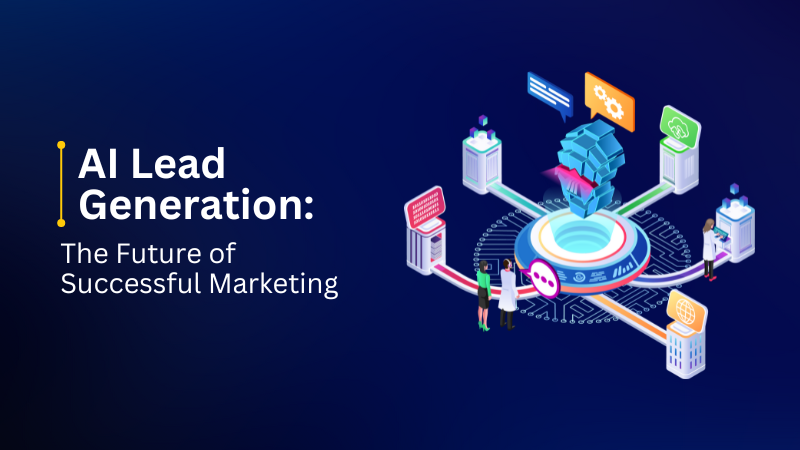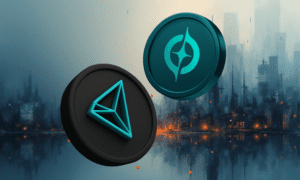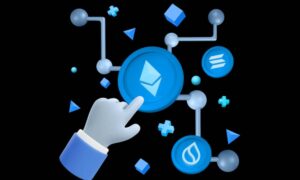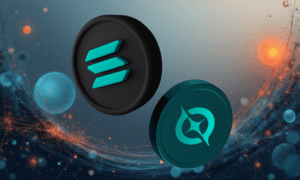Lead generation is the process of identifying and attracting potential customers who are likely to be interested in a product or service. It’s the foundation of every sales and marketing effort because without a consistent flow of qualified leads, even the best product will struggle to grow.
For years, businesses relied on manual prospecting methods like cold calls, purchased email lists, and static databases. While those methods can still work in small doses, they are time-consuming, expensive, and often lead to poor conversion rates.
Today, the process has evolved. Artificial intelligence is reshaping how companies discover and connect with potential customers. AI lead generation tools such as Pyrsonalize are at the forefront of this change, using advanced algorithms to scan online platforms, identify real buying intent, and deliver verified, relevant leads to businesses in real time.
AI lead generation isn’t just about automating the old process. It’s about achieving precision, personalization, and scalability at a level traditional methods could never reach.
AI Lead Generation
AI lead generation uses artificial intelligence to automatically find, qualify, and prioritize potential customers based on data and behavior patterns. Instead of manually searching for prospects or relying on outdated lists, AI analyzes vast amounts of information from multiple platforms to determine who is most likely to convert.
The main difference from traditional lead generation lies in how decisions are made. In manual methods, marketers often rely on guesswork or basic demographic filters. With AI, data-driven algorithms evaluate real signals of interest such as social activity, search intent, or engagement across digital channels.
This technology brings automation and intelligence into prospecting. It helps businesses understand not only who their potential customers are but also when and why they might be ready to buy. AI lead generation operates across platforms like LinkedIn, Reddit, Facebook, and Quora, while also integrating with CRM systems, email campaigns, and chatbots to make outreach more efficient and contextual.
Why Businesses Are Shifting to AI-Powered Prospecting
Modern businesses generate and interact with more data than ever before. Customers engage across multiple platforms, making it difficult for traditional tools and manual methods to keep up. Static lists grow stale quickly, and outreach campaigns lose effectiveness when they rely on outdated or incomplete information.
AI-powered lead generation solves this by continuously analyzing real-time data to identify prospects who are actively showing interest in specific products or services. This approach goes beyond collecting contact details, it focuses on finding leads that are both relevant and ready to convert.
The benefits are clear:
- Saves time and labor costs: AI automates repetitive research and qualification tasks.
- Reduces guesswork in targeting: Data models identify intent signals more accurately.
- Improves conversion rates: Leads are warmer, more relevant, and engaged.
- Scales personalization: Businesses can reach thousands of prospects with tailored messages.
For many teams, this shift represents a new level of efficiency and precision in lead generation, helping them focus less on searching for leads and more on nurturing relationships that drive growth.
How AI Lead Generation Works: Step-by-Step Breakdown
Artificial intelligence transforms lead generation from a manual, uncertain process into a structured, data-driven system. Here’s how it works step by step.
1. Data Collection
AI-powered tools begin by gathering data from multiple online sources where potential customers interact and express intent. This includes social networks, business directories, discussion forums, and industry-specific websites. Instead of relying on static lead lists, the AI continuously scans and updates information in real time. This approach ensures that businesses are reaching out to prospects who are current, relevant, and more likely to engage.
2. Lead Scoring and Qualification
Once the data is collected, machine learning models analyze it to determine which prospects have the highest potential to convert. This process, known as lead scoring, uses signals such as user activity, content engagement, and interaction frequency.
Rather than sorting leads solely by demographics or job titles, AI evaluates behavior patterns and context. For instance, someone who frequently comments on posts about “AI marketing” or “automation tools” is more likely to be a valuable lead than a random contact with a similar title. This behavioral insight allows sales teams to focus their efforts where they matter most.
3. Personalization and Outreach
After leads are scored and prioritized, AI tools assist in crafting personalized outreach messages. Using data such as browsing behavior, social interactions, and past engagements, the system can recommend or even automate messages that feel highly relevant to each recipient.
This enables dynamic personalization at scale, no two messages are identical, yet each feels human and context-aware. Instead of generic cold emails, prospects receive communication tailored to their interests, industry, or recent activity.
4. Continuous Learning and Optimization
The true power of AI lies in its ability to learn and improve. Over time, the system collects feedback from campaigns, who opened an email, clicked a link, replied, or converted, and uses that data to refine its predictions.
Each interaction strengthens the model’s understanding of what types of leads perform best, which messages resonate most, and where to focus next. This creates a continuous feedback loop, resulting in better targeting accuracy and higher-quality leads with every iteration.
Examples of AI in Action
To see how this works in practice, let’s explore a few realistic use cases:
Scenario 1: SaaS Company Targeting Decision-Makers on LinkedIn and Reddit
A software company wants to reach founders and marketing directors who discuss automation or AI adoption online. When using an AI lead generation tool such as Pyrsonalize, the team can monitor these discussions across LinkedIn and Reddit, identify active participants, and collect verified contact information. The result is a curated list of prospects already expressing interest in relevant topics, saving weeks of manual research.
Scenario 2: Real Estate Firm Finding Local Buyers in Online Communities
A real estate agency uses AI to discover individuals searching for new homes in specific areas. The AI identifies users who post about moving, mortgage questions, or local housing trends in community groups and forums. Agents can then reach out with tailored property recommendations that align with those users’ needs.
Scenario 3: B2B Marketing Teams Identifying “Warm” Leads
A marketing agency focuses on finding businesses seeking growth or automation solutions. The AI filters online activity, highlighting companies that comment on relevant threads or follow competitors. These “warm” leads are more likely to respond to outreach, enabling the team to prioritize quality over volume.
Key Features to Look For in an AI Lead Generation Tool
Not all AI tools offer the same capabilities. The best solutions combine intelligent automation with real-time accuracy and adaptability. Here are the most important features to look for:
- Multi-Platform Data Scanning: Ability to analyze activity across many channels, not just one source.
- Real-Time Lead Verification: Ensures leads are current, active, and valid before they enter your pipeline.
- AI-Based Scoring and Segmentation: Prioritizes leads by intent and relevance, helping sales teams focus on those most likely to convert.
- CRM and Automation Integrations: Seamless syncing with sales tools and marketing workflows to streamline outreach.
- Advanced Filtering for Intent and Relevance: Filters out noise by recognizing meaningful buying signals rather than general interest.
Tools like Pyrsonalize combines all these features into one platform, emphasizing verified, intent-based leads rather than static databases. This ensures businesses spend less time sorting through irrelevant contacts and more time connecting with prospects who actually want to buy.
Industries That Benefit Most from AI Lead Generation
AI lead generation offers measurable advantages across nearly every industry, but certain sectors gain particularly strong results due to their reliance on digital outreach and data-driven marketing.
- SaaS and Tech Startups: These companies often need to identify decision-makers quickly and at scale. AI helps them find qualified leads who are actively discussing pain points like automation, workflow optimization, or software integration.
- Real Estate and Financial Services: AI can pinpoint local buyers, investors, or borrowers showing intent on forums, social media, and search platforms, enabling more targeted outreach.
- Marketing Agencies and Consultants: Agencies can use AI to find businesses seeking digital growth or lead generation support, making prospecting faster and more effective.
- Recruiting and HR Tech: AI assists in identifying candidates and hiring companies simultaneously, improving efficiency for recruiters and job platforms.
- B2B Service Providers (Legal, Construction, Logistics, etc.): For industries that rely on long sales cycles, AI provides consistent lead discovery and qualification to maintain a strong pipeline.
While these are standout examples, AI tools like Pyrsonalize are flexible enough to adapt to virtually any niche. Whether the goal is local service outreach or global enterprise prospecting, the same principles apply: data, context, and automation drive better results.
Challenges and Limitations of AI Lead Generation
Despite its strengths, AI lead generation isn’t without challenges. Understanding these limitations helps businesses adopt it more effectively.
- Data Privacy and Compliance: Handling personal or behavioral data requires strict adherence to laws like GDPR and CCPA. Businesses must ensure transparency and proper consent when processing lead information.
- Dependence on Algorithm Accuracy: The quality of results depends on the model’s training data and logic. Poorly tuned algorithms can misclassify or overlook valuable leads.
- Learning Curve for Non-Technical Users: While most AI tools simplify workflows, users still need time to interpret insights and adjust strategies accordingly.
- Balancing Automation with Human Connection: Automation accelerates outreach, but meaningful relationships still require a personal touch. The best outcomes come from combining AI precision with genuine human communication.
Recognizing these challenges helps teams set realistic expectations and build stronger, more ethical lead generation systems.
The Future of AI in Lead Generation
The next stage of AI-driven prospecting is already unfolding. As algorithms and data ecosystems advance, the process will continue to evolve in several key directions:
- Predictive Prospecting: AI will anticipate customer needs before they surface, identifying leads at the earliest stage of intent.
- Integration with AI-Driven CRM and Chatbots: Systems will work together to automate follow-ups, lead nurturing, and customer support, creating seamless buyer journeys.
- Continuous Learning from Buyer Intent Data: As tools process more engagement signals, their predictions about who will convert and why will become increasingly precise.
- Emphasis on Ethical Data Use and Personalization: Future success will depend on balancing privacy with personalization, using data responsibly to enhance customer trust and engagement.
The companies that adopt these advancements early will enjoy a lasting competitive advantage in their marketing and sales operations.
Conclusion
AI lead generation is transforming the way businesses attract, qualify, and convert prospects. By combining automation, data intelligence, and personalization, it eliminates much of the guesswork that once defined traditional prospecting.
Tools like Pyrsonalize demonstrate how this technology can go beyond static databases, delivering verified, real-time leads from platforms where customers already engage. The result is a smarter, more efficient path to building meaningful client relationships.
For modern businesses, exploring AI-based lead generation isn’t just an option, it’s a necessary step toward staying competitive in a data-driven marketplace.
Read More From Techbullion



































